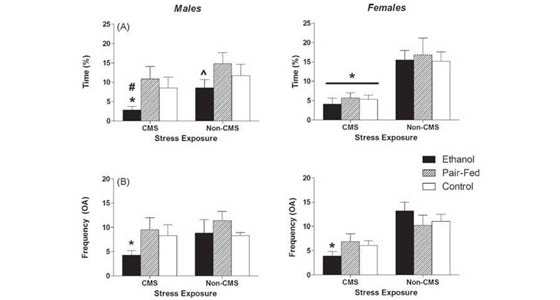 Prenatal alcohol exposure: Fetal programming and later life vulnerability to stress, depression and anxiety disorders.
Prenatal alcohol exposure: Fetal programming and later life vulnerability to stress, depression and anxiety disorders.
Authors: Kim Hellemans, Joanna Sliwowska, Pamela Verma and Joanne Weinberg. Lab of Joanne Weinberg, Cell & Developmental Biology (CELL) Research Group, Department of Cellular & Physiological Sciences
Published in Neuroscience and Biobehavioral Reviews Volume34, Issues 6, May 2010, Pages 791-807 ![]() doi:10.1016/j.neubiorev.2009.06.004;
doi:10.1016/j.neubiorev.2009.06.004;
Abstract: Children with fetal alcohol spectrum disorder (FASD) exhibit cognitive, neuropsychological and behavioral problems, and numerous secondary disabilities including depression and anxiety disorders. Dysregulation of the hypothalamic–pituitary–adrenal (HPA) axis is common in depression/anxiety, reflected primarily in increased HPA tone or activity. Prenatal alcohol exposure (PAE) increases HPA tone and results in HPA dysregulation throughout life, paralleling many of the HPA changes in depression/anxiety. We review data demonstrating altered HPA function and increased depression/anxiety in FASD. In the context of the stress-diathesis model, we discuss the hypothesis that fetal programming of the HPA axis by PAE alters neuroadaptive mechanisms that mediate the stress response, thus sensitizing the organism to stressors encountered later in life, and mediating, at least partly, the increased vulnerability to depression/anxiety disorders. Furthermore, we present evidence demonstrating sex-specific alterations in both hormonal and behavioral responsiveness to tasks measuring depressive- and anxiety-like behaviors in PAE offspring. Overall, the research suggests that the stress-diathesis model provides a powerful approach for elucidating mechanisms underlying the increased vulnerability to mental illness among individuals with FASD, and developing appropriate treatments for these individuals. Dr. Seymour Levine’s seminal work on the long-term consequences of early life experiences formed a framework for the development of the research described in this review.
Keywords: HPA axis; Prenatal ethanol; Depression; Behavior; Animal models; Rat; Fetal programming; Fetal alcohol spectrum disorder




